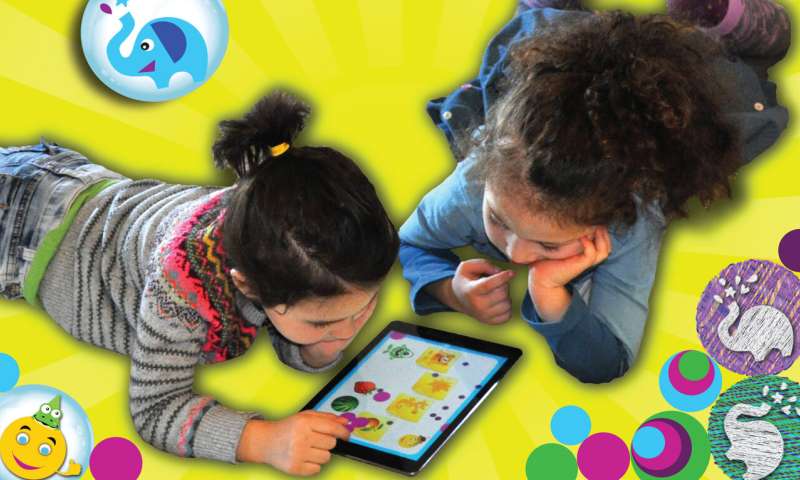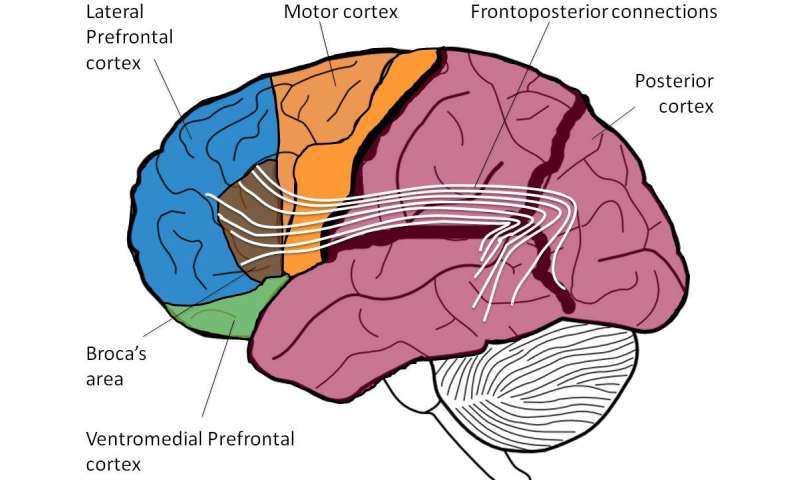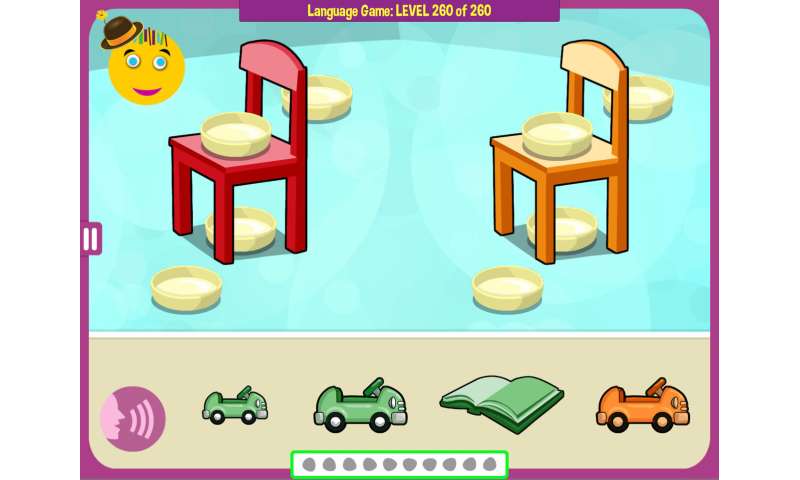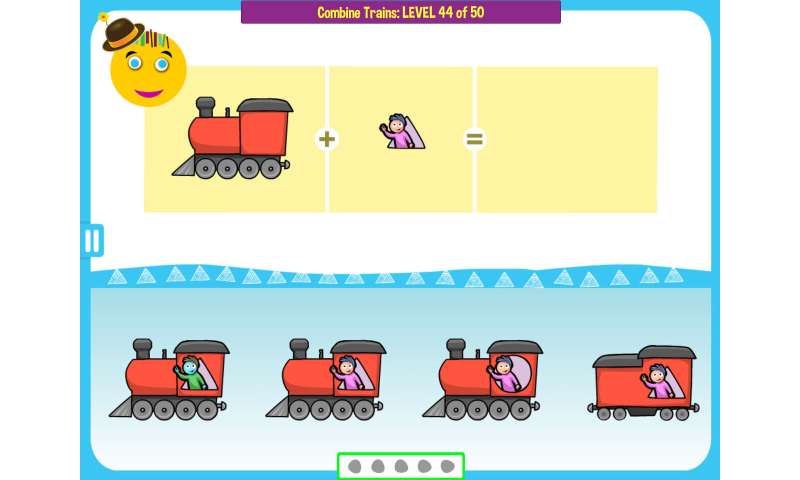[Dialog] Novel prefrontal synthesis intervention improves language in children with autism

The CDC estimates that one in 54 children is affected by autism, a neurological disorder that disrupts early development in cognition and communication, leading to impairment in cognitive and social functions and difficulty in acquiring new adaptive behaviors. Up to 70% of children diagnosed with autism spectrum disorder (ASD) experience language difficulties.
There is a broad scientific consensus that early and intensive language therapy has the greatest promise of significantly improving outcomes. However, the availability, quality and general funding for early intervention programs is often lacking, leaving newly diagnosed children without adequate and sufficient therapy during the most critical early period of their development.
Novel intervention improves language
Over the last decade, ImagiRation has developed a highly innovative adaptive language therapy application for children with ASD, called Mental Imagery Therapy for Autism (MITA). In the manuscript published in the journal Healthcare, ImagiRation reports the result of a three-year clinical study of 6,454 ASD children ages two to 12 years. Children who engaged with MITA showed 2.2-fold greater language improvement than children with similar initial evaluations. This difference was statistically significant (p<0.0001).
MITA application
The MITA application includes both verbal and nonverbal exercises aiming to develop prefrontal synthesis (PFS), the neurological mechanism responsible for the juxtaposition of mental visuospatial objects into novel combinations at will. Most people assume the presence of innate PFS abilities in all individuals. However, therapists, researchers and caregivers working with children with ASD appreciate the challenges of PFS acquisition.
Even when language therapy is administered daily, some children never build up the neurological connections essential for PFS. Failure to acquire PFS ability results in a lifelong deficiency in understanding complex language such as spatial prepositions, recursion and fairytales, which require the listener to imagine unrealistic situations. Among individuals diagnosed with ASD, the prevalence of lifelong PFS paralysis is 30 to 40% and can be as high as 60% among children enrolled in special ASD schools.

MITA verbal activities train PFS by using higher forms of language, such as noun-adjective combinations, spatial prepositions, recursion and syntax. For example, a child can be instructed to "put the cup {behind|in front of|on|under} the table" or take animals home following an explanation that "the lion lives above the monkey and under the cow." In every activity, a child listens to a short story and then works within an immersive interface to generate an answer. Correct answers are rewarded with pre-recorded encouragement and animations.
MITA nonverbal activities aim to provide the same PFS training visually through implicit instructions. For example, a child can be presented with two separate images—that of a train and a window pattern. The task is to mentally integrate the train and the window pattern and to match the result of integration to the picture of the complete train positioned among several incorrect trains. The child is encouraged to avoid trial and error, focusing instead on integrating separate train parts mentally, thus training PFS. Different games use various tasks and visual patterns to keep the child engaged.
The significant improvement of language observed in the MITA study brings hope to many families. MITA has been translated into over 12 languages and is available in over 100 countries. MITA has the potential to become an essential tool of digital medicine for children with language delay. With COVID-19 speeding societal transition into the realm of telemedicine and online therapies, digital medicine shows tremendous promise when it is given sufficient time and the ingenuity to perform outside the bounds of classic therapies, rather than simply adopting it as a platform for providers to perform the same services as in office.

The mystery of the evolution of human language
The idea for using PFS training in children came to Dr. Vyshedskiy while studying the evolution of language. A modern speech apparatus existed in our ancestors before modern humans split from the Neanderthal line 600,000 years ago, suggesting articulate speech in both species. However, the sudden explosion of composite figurative arts, different types of tools including bone needles with an eye, construction of dwellings, and elaborate burials signifying the presence of religious beliefs did not occur before 70,000 years ago.
This abrupt jump to human modernity, called the Cognitive Revolution by Yuval Hariri, coincided with the extraordinarily fast and extensive diffusion of Homo sapiens out of Africa around 65,000 years ago, as well as unprecedented demise of megafauna and Neanderthals. The half-million-years gap between acquisition of articulate speech 600,000 years ago and modern behavior 70,000 years ago has puzzled researchers ever since Darwin, and led Christiansen to declare that the emergence of language is "the hardest problem in science."
The published clinical study with children on the autism spectrum shows that PFS is an essential component of language and suggests that PFS could be the missing link between the articulate speech and modern behavioral modernity. If the neurological mechanism of PFS was acquired 70,000 years ago, it would have enabled unlimited mental simulations, parsimoniously explaining the rapid explosion of figurative arts, the invention of tools, the construction of dwellings, and the development of religious beliefs in early modern humans and the lack thereof in their ancestors before 70,000 years ago. The emergence of PFS would also explain the demise of megafauna due to the invention of animal traps and the elimination of bigger and stronger Neanderthals by stratagem.

The acquisition of PFS 70,000 years ago would also mark the acquisition of full language by humanity. In fact, full language ability clearly depends on the combinatorial property enabled by the visuospatial synthesis of PFS. Consider the two phrases "cat on a mat" and "mat on a cat." While the two phrases share the same vocabulary and the same grammar, the difference is obvious. When reading the two phrases, one visualizes the two situations and places the image of the cat on top of the image of the mat.
Similarly, if the phrase was modified to become "big black cat on a tiny wet mat," one would immediately adjust the mental image to reflect the additional details. When the new phrase is rearranged to "big black mat on a wet cat," the same process of disassembly and reassembly takes place. Thus, a completely new image is constructed, despite the fact that most people have never seen a mat on a cat. The PFS ability to combine and recombine novel mental images at will is essential for complex language comprehension including semantically reversible sentences, spatial prepositions, recursion and fairytales, which require the listener to imagine unrealistic situations.
The evolutionary dualism of language
The evolutionary dualism of language, with articulate speech and the visuospatial combinatorial PFS emerging via separate neurological mechanisms, suggests that language training in atypically developing children can also be conducted along the two paths simultaneously. In fact, many techniques used by speech language pathologists and ABA therapists are already aimed at improving PFS: combining adjectives, location/orientation, color, and size with nouns; following directions with increasing complexity; building the multiple features/clauses in sentences; visual-visual and auditory-visual conditional discrimination; development of multi-cue responsivity; and reduction of stimulus overselectivity.
However, these PFS exercises are usually just a small part of the therapy that mainly focuses on a child's speech and vocabulary. Due to shorter neurological connections between neurons encoding words and their visual representations, vocabulary is easier to train. Further encouraging the focus on vocabulary training, it is highly appreciated by parents and the success of an intervention is commonly measured by tests that rely exclusively on a child's vocabulary. The MITA study underscores the importance of PFS training and should pivot conventional language therapy toward greater attention to PFS exercises.

For those interested in exploring the topic further, Dr. Vyshedskiy has recently published a book, "This way to language: four things to do at the first sign of autism," (ISBN: 978-1-716-34999-7) that details personal experiences of parents who have helped their children overcome the barriers to complex language and documents essential exercises necessary for PFS acquisition. Whether parents are using conventional therapy, MITA, or a combination of both, PFS exercises should be an integral part of any language therapy.
This story is part of Science X Dialog, where researchers can report findings from their published research articles. Visit this page for information about ScienceX Dialog and how to participate.
Bio:
Andrey Vyshedskiy, Ph.D. is a neuroscientist from Boston University. He has authored over 100 scientific publications that appeared in the New England Journal of Medicine, Journal of Autism and Developmental Disorders, Thorax, Chest, Journal of Neuroscience and other leading scientific journals. His research focuses on child development, the neurological basis of imagination, and evolution of language. In the past, he has also conducted research in neurophysiology, cardiopulmonary acoustics, and optical vibrometry. Dr. Vyshedskiy has been teaching Human Physiology and Neuroscience of Consciousness at Boston University for over two decades. He has also periodically taught Tufts Medical School students. Dr. Vyshedskiy has founded multiple successful companies and directed the development of several FDA-approved medical devices. Based on his research, ImagiRation has designed a therapy application for children with autism (MITA), that has been demonstrated to significantly improve their language abilities.
More information:
Andrey Vyshedskiy et al. Novel Prefrontal Synthesis Intervention Improves Language in Children with Autism, Healthcare (2020). DOI: 10.3390/healthcare8040566